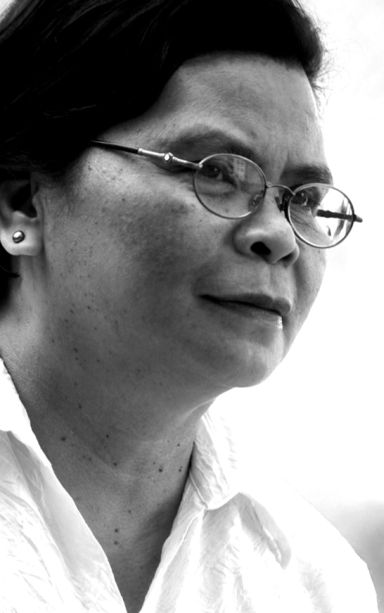
DELACERNA
Cultural Workers from the 1980s and years after that held a reunion yesterday at the Handuraw Gorordo Branch: the Banaag Network, Dungog Network, PETA-CITASA in the Visayas, Bitaw, USC-TG, Prayer, STC Bantawan, DKR (Dulaang Katilingban sa Redemptorist), Cebu Repertory, etc.
It was Martial Law that brought forth these cultural groups. Never before was theater so alive and effective which made the protest movements against the dictatorship so memorable to the audience and the performers which could hardly be found in books or any printed material. Too bad technology was very limited then.
Ironically, I watched the most beautiful theatrical productions during Martial Law. Foremost was “Kabesang Tales” by PETA staged at the Capitol Social Hall in 1975 and directed by Joy Mockon who just came back from the London Academy of Arts. Then in 1976 PETA-CITASA conducted a workshop on Integrated Theater Arts in UP Cebu for teachers which I participated. It was the beginning of building a network of other cultural workers. One interesting development in the 1970’s was the active participation of school-based theater groups among them the STC Bantawan and the USC Theater Guild which became a close partner of the UP High School Drama Club which I organized. These school-based groups popularized the Dula-Tula which was very effective in developing social consciousness among students and the community.
It was in the 1980’s that many workshops and productions were conducted and showcased. The assassination of Sen. Ninoy Aquino in 1983, the US bases in the Philippines, Nuclear plants were added features to the brutality of Martial Law that brought about the productions of Oratorio and the musical Nukleyar by Al Santos at the St. Theresa’s College Auditorium.
PETA staged Shakespeare’s Macbeth in Filipino in 1984 at Fort Santiago, Intramuros immediately after the infamous elections of 1984 where results were rigged and the canvassers walked out en masse at the PICC. The play was so relevant and very close to the life and rule of Marcos and Imelda.
The opening scene of the Witches was very thought-provoking. Shakespeare’s “Foul is fair, and fair is foul” was translated to “Masama ang mabuti, mabuti ang masama.”
Then in 1985, the Cebu Repertory staged “Ang Kinabuhi ni Galileo”, the Cebuano translation of Bertolt Brecht’s play on Galileo directed by the renowned Fritz Bennewitz who also directed Macbeth in Intramuros. It was presented at the volleyball court of St. Theresa’s College near the covered gym. Being in the cast of “Galileo” (I played Mrs. Sarti, the housekeeper of Galileo) was very memorable to me for I interacted with several cultural workers and I learned a lot from Fritz Bennewitz (whose name sounds like fringe benefits). I liked the way he explained each scene to the actors.
During symposia and fora these cultural groups provided the opening, intermission and closing numbers. It did not matter what group you were affiliated with but anytime there was a call for mass action on the streets or inside an auditorium or building, they were all always there. Rehearsals were a big challenge because most people were working so we had to wait for some time. Provisions for snacks posed a problem for there were no funds, but we managed with what we had.
After EDSA these cultural groups gradually split for some opted to work with various NGOs which sprouted after EDSA. Others joined the academe either full time or part time. A few moved to other places in the country and outside the country.
But cultural workers will always be cultural workers wherever they are. Some are helping their communities in their arts and culture programs. Those who are in the academe are working to help provide aesthetic directions to their students and continuing educating for social consciousness.
After three decades, it’s about time cultural workers come together perhaps to resuscitate the cultural movement of the 1980’s. May your tribe increase!